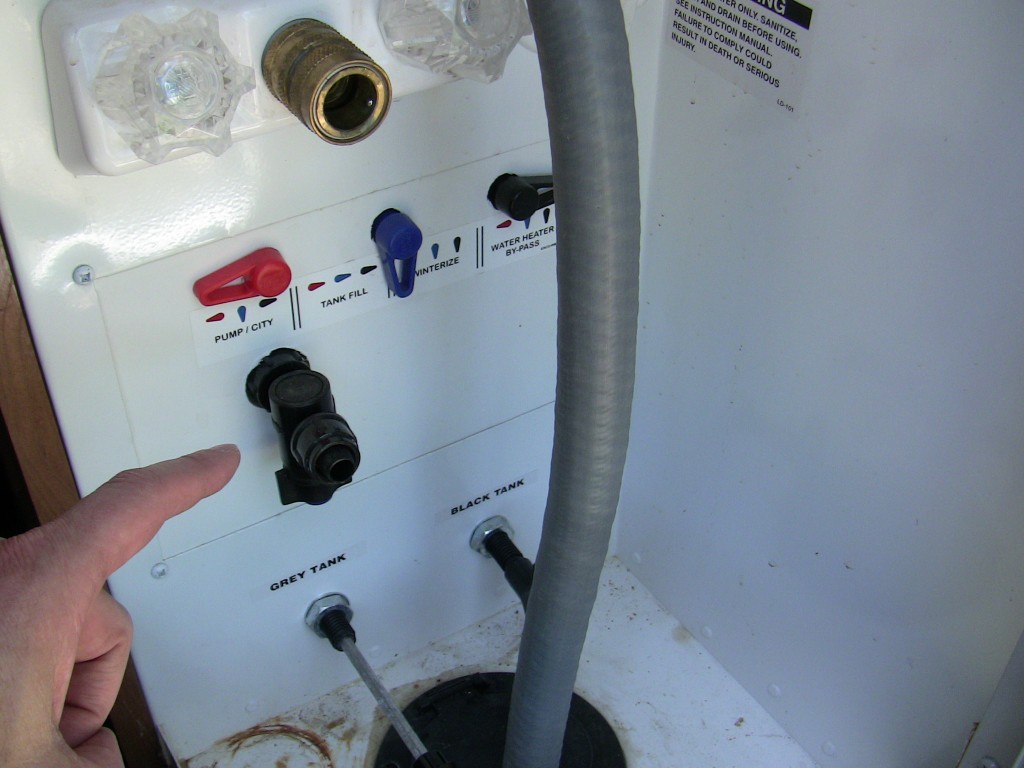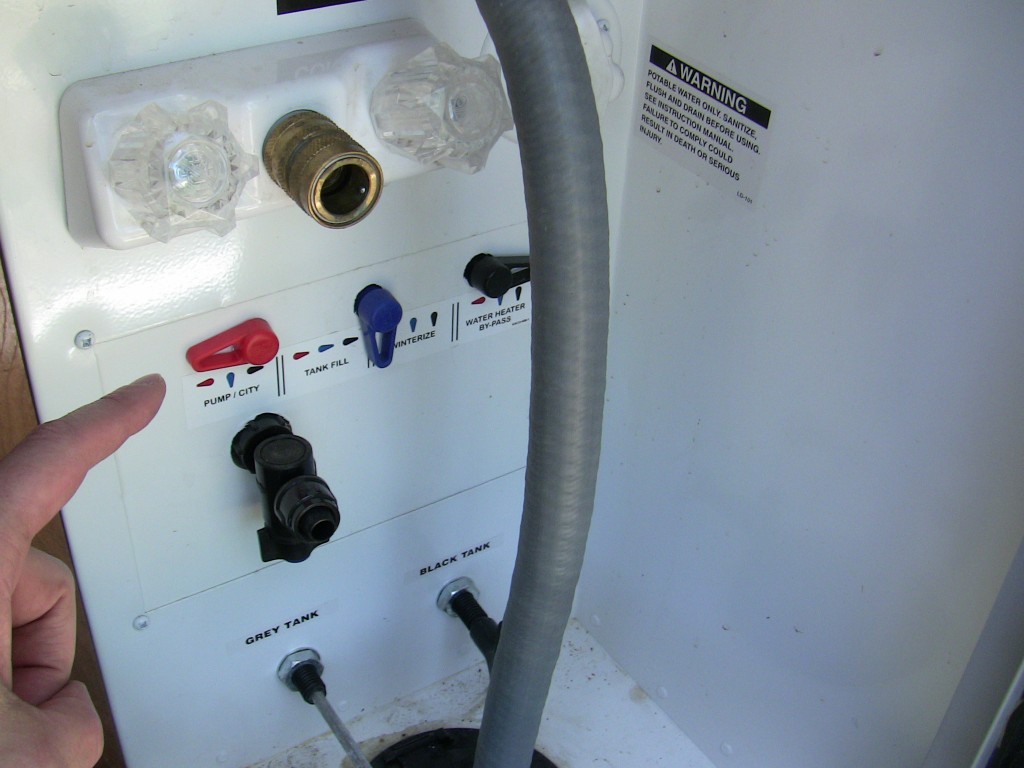Water Routing Controls and Inlets :
On the driver’s side of the RV, amongst all the controls, you should be able to find a siphon hose inlet and some control that allow you to route water different ways through your RV water system.
The siphon inlet can be used a couple of ways:
- To “suck” in non-poisonous safe anti-freeze that you put into the RV water system during the winter so that you won’t freeze the water in the system and break some pipes or have other freeze damage.
- To suck in water to fill your fresh water tank.
- I guess technically, there could be a third use – to suck in fresh water into your system and actually use that fresh water with a large outdoor tank. I never really see that in the literature, but it does seem like you could do that.
To make the siphon work, you would have to be using the on-board water pump which is used to create water pressure in the RV.
You should know that RV’s have a concept where the water system is pressurized. Why? Because by allowing the system to take on a little pressure the RV water pump has something to work against. It pressurizes the RV system, I think to 60 pounds of pressure and then shuts off. When you turn on a faucet pressure drops. When it drops below 40 pounds of pressure the pump turns back on. This way you can generate water pressure for showers, kitchen sinks, and toilets even though you are simply using your own fresh water tank. This whole concept would not work unless the system allowed itself to store a little pressure. I think that is actually pretty cool. The downside of this is that when you are on city water or shore water for fresh water connections, a big surge in pressure can cause problems in your RV water systems. Our local RV repair person says water leaks are the number one thing he fixes. I surmise this is at least partially tied to water pressure surges on city water.
The water routing connections are never explained very well on the internet. I’ll try to do it right here in simple and plain language.
1) Hot water heater bypass mode – Allows water to flow from the fresh water tank (using the pump) OR city water to ALL RV systems EXCEPT the hot water heater. This is VERY similar to Winterize except Winterize is meant to suck antifreeze in the siphon connection.
2) City Water/Pump – Normal operation – water goes from the fresh water tank (using the pump) OR city water to ALL RV systems, including the hot water heater. Of course the OUTPUT of the hot water tank goes to all the hot water faucets in your RV.
3) Tank Fill – This takes water from the siphon hose connection OR the city water connection and sends it into the fresh water tank.
4) Winterize – This takes “liquid” – should be safe anti-freeze – from the siphon valve and sends it EVERYWHERE in the RV system except the hot water heater. The idea here is that you can use this technique to put antifreeze in the system without putting it into the hot water heater, thereby saving 6-10-12 gallons of antifreeze before you get the entire hot water pipes filled with anti-freeze.
There are a billion articles on the internet for winterizing your RV – and everyone is very passionate about the subject. I believe it is probably a good maintenance activity – but honestly – I lack passion on the subject!
Pictured below are the siphon hose inlet and the water valve control center. You should be able to locate these on any RV with a little looking.


Leave a Reply